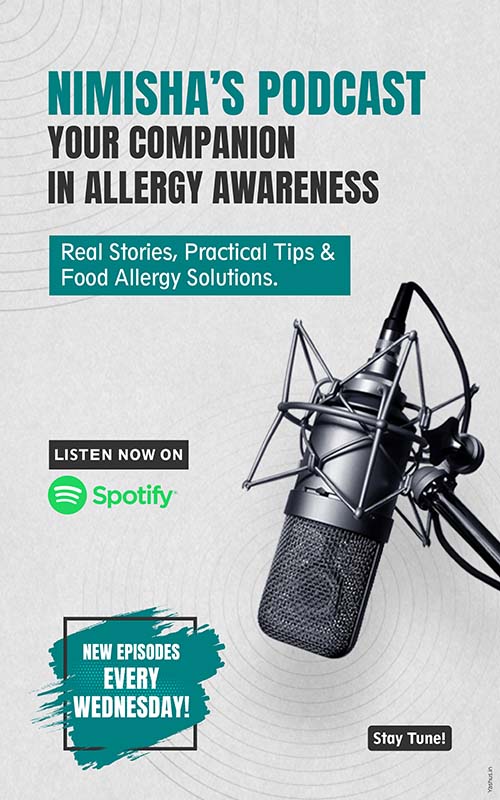
Food allergies have become a growing concern globally, affecting millions of individuals, and the importance of clear and accurate food allergy labeling cannot be overstated. For those living with common food allergies, proper labeling is crucial in ensuring that they can avoid potentially life-threatening allergic reactions. While allergen labels have improved in many parts of the world, gaps still exist in providing clear, consistent, and comprehensive information. This blog explores the current state of food allergy labeling, what consumers should look for on food packages, and what is still missing.
The Importance of Food Allergy Labeling
Food allergies occur when the immune system mistakenly identifies a harmless substance as a threat. Common allergens include peanuts, tree nuts, milk, eggs, fish, shellfish, wheat, and soy, which together account for the majority of allergic reactions. In the U.S., the Food Allergen Labeling and Consumer Protection Act (FALCPA) of 2004 made it mandatory for food manufacturers to clearly label the presence of these 8 major food allergens in their products. This law was a major milestone in helping individuals with common food allergies avoid dangerous exposure.
Accurate labeling empowers consumers by providing them with the necessary information to make safe food choices. However, food allergy labeling is not always straightforward or consistent. Understanding what allergen labels should indicate helps consumers navigate food packaging and avoid products that might trigger common allergic reactions to food.
What to Look For: Key Information in Food Allergy Labels
Food allergy labels must provide specific details to help consumers avoid the most common food allergies. In the U.S., FALCPA mandates clear, bold text to identify any of the 8 major food allergens. Key areas to watch for on food packages include:
-
Ingredients List: The ingredients list should include all components of the product, with the common food allergens clearly highlighted. Often, these allergens will be bolded or underlined for easy visibility. This section is the first stop when evaluating a food product for potential allergens.
-
"Contains" Statement: Many manufacturers include a "Contains" statement near the ingredients list, clearly stating if any of the major food allergens are present. For example, a peanut butter product may have a "Contains: Peanuts" statement in addition to listing peanuts in the ingredients list. This makes it easier for those with food allergies to quickly assess risk.
Some additional elements consumers might find on food labels include:
-
Cross-contamination warnings: Phrases such as "may contain traces of" or "processed in a facility that also processes peanuts" offer warnings for individuals sensitive to even trace amounts of allergens. While these warnings are not legally required, many manufacturers voluntarily include them as a precaution.
-
Allergen-free claims: Claims such as "gluten-free," "dairy-free," or "nut-free" can be reassuring for consumers with specific common food intolerances, though the level of oversight on these claims can vary.
What’s Missing: Gaps in the Current Food Allergy Labeling System
While food allergy labeling has significantly improved over the years, gaps still remain in the system, creating challenges for individuals managing common food allergies.
-
Lack of Uniformity Across Countries: Food allergy labeling standards vary globally. In the U.S., labeling focuses on eight major allergens, while in the European Union, the list is longer and includes allergens like mustard and celery. This lack of standardization can make it difficult for consumers traveling internationally or purchasing imported products to assess food safety.
-
Undeclared or Hidden Allergens: Cross-contamination is a significant risk for individuals with severe allergies. While some manufacturers include cross-contamination warnings, these warnings are not standardized or regulated, leading to confusion about what level of exposure may be safe for consumers with common allergic reactions to food.
-
Inconsistent Use of Allergen-Free Claims: While products labeled as "allergen-free" or "nut-free" are meant to offer reassurance, they may still be processed in facilities that handle the most common food allergens. Without proper oversight and consistency, these claims can be misleading, creating potential risk for consumers.
-
Limited Coverage of Less Common Allergens: The focus of most labeling laws, such as FALCPA, is on the 8 major food allergens. However, many individuals have allergies to less common foods, such as certain fruits, vegetables, or spices, which are not always included in allergen labeling. This can leave some consumers without clear guidance.
-
Lack of Education and Awareness: Even with proper labeling, many consumers and food industry workers lack awareness about how to interpret food allergy labels. Education on reading food labels and preventing cross-contact is essential to improving safety for those with common food allergies.
Conclusion
Food allergy labeling is an essential tool for individuals with common food allergies, offering critical information to avoid dangerous reactions. However, the system still has gaps, such as inconsistent use of cross-contamination warnings and lack of uniform global standards. As awareness grows about food allergies, there’s a pressing need for more comprehensive, transparent, and standardized labeling practices. With improved allergen labels, consumers can make safer food choices, minimizing the risks associated with common allergic reactions to food.
Learn More About - Allergy-Friendly Holiday Cooking Gadgets and Tools: Must-Haves for Your Kitchen
FAQ
-
Food allergy labeling is the practice of clearly identifying potential allergens in food products to help consumers avoid allergic reactions. It's crucial for the safety of individuals with food allergies.

-
The most common allergens on food labels include peanuts, tree nuts, milk, eggs, fish, shellfish, wheat, and soy, known as the 8 major food allergens.

-
Always check the ingredients list for allergens, and look for “Contains” statements that highlight common food allergens. Also, pay attention to cross-contamination warnings.


-
No, food allergy labeling requirements vary by country. For example, the U.S. requires labeling for 8 major allergens, while the European Union mandates a larger list, including allergens like sesame and mustard.



.png)
.png)








